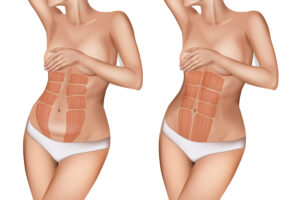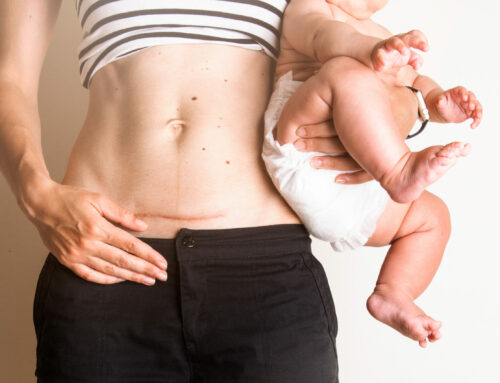Why Women Still Have Postpartum Back Pain After Giving Birth — And How Physiotherapy Can Help
Bringing a baby into the world is one of the most incredible experiences a woman can go through. But for many mothers, the journey doesn’t end after delivery. In fact, a significant number of women continue to suffer from postpartum back pain, sometimes for months or even years after childbirth.
While this discomfort is common, it shouldn’t be considered normal or something mothers simply have to “put up with.” Understanding the reasons behind postpartum back pain and how physiotherapy can aid in recovery is the first step toward long-term relief and a stronger, healthier body.

The Reality of Postpartum Back Pain
Postpartum back pain can be persistent, frustrating, and debilitating. Many mothers report pain in the lower back, upper back, or sacroiliac (SI) joints, often accompanied by stiffness, reduced mobility, and fatigue.
Some women even experience pain during basic movements like picking up their baby, pushing a pram, or getting out of bed. It can interfere with sleep, caring for the baby, returning to exercise, and performing day-to-day tasks.
So why does back pain linger after birth?
There are several key contributors:
1. Hormonal Changes and Joint Instability
During pregnancy, your body produces a hormone called relaxin, which loosens the ligaments and joints in the pelvis to prepare for childbirth. This ligament laxity can continue well after delivery, leading to joint instability, particularly in the pelvis and spine.
If this instability isn’t addressed, it can create imbalances in how your muscles support your joints, leading to chronic pain and compensation patterns.
2. Weakened Core and Pelvic Floor
Pregnancy and childbirth stretch and weaken the abdominal and pelvic floor muscles. In some cases there may be abdominal muscle separation or pelvic floor tears during child birth. These muscles are essential for supporting your spine, maintaining posture, and absorbing load during movement. If they are not properly strengthened or healed , your back may take on extra strain, causing ongoing pain.

3. Poor Posture and Repetitive Lifting
Caring for a newborn involves a lot of repetitive actions: feeding, lifting, changing nappies, and carrying your baby. These often happen in awkward postures, especially if you’re tired or not thinking about body mechanics.
Over time, these repeated movements with poor posture can lead to muscular imbalances and back pain.
4. C-Section or Traumatic Birth Recovery
For women who have undergone a Caesarean section or a difficult vaginal delivery, recovery can be more complex. Scar tissue, muscle trauma, and longer healing times can contribute to poor movement patterns and protective guarding, which can put extra pressure on the back.

5. Lack of Postnatal Rehabilitation
Most mothers are not given a structured rehab plan after birth or referred for postpartum Physiotherapy. Once the six-week check-up is cleared, they are often expected to resume life as usual. But the reality is, your body has gone through significant physical change, and without targeted recovery, back pain can persist.
How Physiotherapy Can Help You Recover
The good news? Physiotherapy is one of the most effective ways to manage and eliminate postpartum back pain. A physiotherapist trained in postnatal care can assess your movement, posture, strength, and flexibility, and create a tailored plan to help your body recover safely and effectively.
Here’s how physiotherapy can help:
1. Pain Relief Through Hands-On Therapy
Manual therapy techniques such as soft tissue release, joint mobilisations, and myofascial release can help reduce pain and tension in the lower back and pelvic region. These techniques improve circulation, decrease inflammation, and allow the body to move more freely.

2. Core and Pelvic Floor Rehabilitation
A physio will guide you through gentle, progressive exercises to reactivate your deep core and pelvic floor muscles. Reformer Pilates can be a really good strengthening tool for these muscles. This creates a stable foundation for the rest of your body and reduces the load on your back.
Common early-stage exercises might include:
- Diaphragmatic breathing
- Transverse abdominis activation
- Pelvic tilts
- Supine bridges
As you build strength, you’ll be progressed to more dynamic movements that mimic real-life activities.

3. Posture and Movement Retraining
Posture is everything when it comes to back pain. A physiotherapist will assess how you sit, stand, lift, and carry your baby, and teach you safer, more efficient ways to move that reduce strain on your back.
They might recommend:
- Supportive feeding positions
- Lifting techniques that use your legs and glutes
- Babywearing adjustments to reduce spinal pressure
4. Individualised Exercise Program
Every mother is different. A physiotherapist will design a progressive, personalised program to rebuild strength, endurance, and mobility. Whether your goal is to return to exercise, chase after toddlers, or simply feel strong and pain-free again, your plan will be tailored to your lifestyle.
5. Education and Empowerment
Perhaps one of the most important benefits of physiotherapy is education. Understanding what is happening in your body and why you feel pain is empowering. Your physio will help you feel in control of your recovery, not stuck in a cycle of frustration and discomfort.
Final Thoughts
Postpartum back pain is common, but it doesn’t have to be permanent. With the right guidance and support, you can recover fully and feel strong from within.
Physiotherapy offers a safe, effective, and evidence-based approach to resolving postpartum back pain by addressing its root causes: weakness, instability, poor movement, and postural habits.
So if you’re a mother dealing with ongoing back pain, know this: you don’t have to live with it. You deserve to move confidently, care for your family without pain, and feel at home in your body again.
Reach out to a physiotherapist who understands the postpartum journey and take the first step toward healing today, stronger and safer!Click on the link below to book online.





Leave A Comment